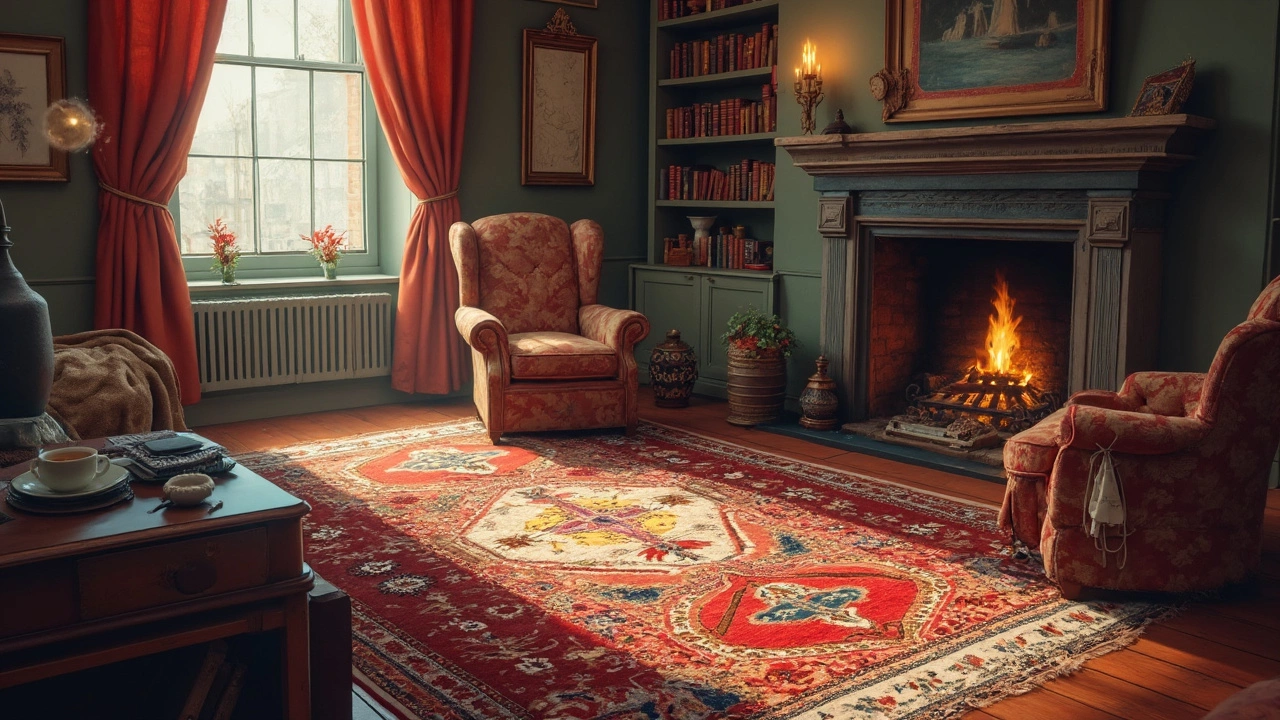Traditional Rugs: Sustainable Style for Every Room
If you love classic looks but also care about the planet, traditional rugs are a perfect match. These floor pieces bring history, texture, and warmth while using natural fibres that tread lightly on the environment. Below we break down what makes a rug "traditional," how to pick one that fits your home, and simple care tricks that keep it looking fresh.
What Makes a Rug Traditional?
Traditional rugs are usually hand‑woven using age‑old patterns that have been passed down through generations. The designs often feature geometric shapes, tribal motifs, or floral repeats that you’d find in Persian, Turkish, or Indian weaving studios. What sets them apart from machine‑made options is the hands‑on process: each knot is tied by a weaver, giving the rug a unique texture and a story stitched into every inch.
Because the craft relies on natural materials, eco‑friendly traditional rugs typically use wool, cotton, jute, or sisal. Wool is a favorite – it’s renewable, biodegradable, and naturally flame‑resistant. Cotton and jute add a lighter feel, perfect for casual spaces or summer rooms. All these fibres break down harmlessly at the end of their life, unlike synthetic carpets that sit in landfills for decades.
Choosing & Caring for Eco‑Friendly Traditional Rugs
Start with the room’s traffic level. High‑traffic areas like living rooms benefit from a dense wool rug that can handle foot traffic without flattening. For bedrooms or low‑traffic zones, a softer cotton‑jute blend works well and adds an airy vibe.
Size matters too. Measure the floor space and leave at least 12‑inch border around the edges so the rug feels grounded without overwhelming the room. If you’re unsure, lay a piece of newspaper on the floor and outline it with painter’s tape – you’ll instantly see if the size looks right.When it comes to sustainability, check the label. Look for certifications such as Global Organic Textile Standard (GOTS) or Fair Trade. These tags confirm that the fibre is grown without harmful chemicals and that the weaver earned a fair wage.
Cleaning a traditional rug is straightforward but needs gentleness. Vacuum with a low‑suction setting and avoid rotating the brush head; harsh agitation can pull fibers loose. For spills, blot – don’t rub – with a clean cloth, then rinse with a small amount of mild detergent mixed with water. Let the rug air‑dry flat, away from direct sunlight to prevent fading.
Rotate the rug every few months. This evens out wear and keeps the pattern looking vibrant. If you notice stubborn stains or a lingering odour, a professional rug cleaner who specializes in natural fibres is worth the investment.
By choosing a traditional rug made from eco‑friendly materials, you get a piece that tells a story, adds comfort, and supports sustainable practices. It’s a small change that packs a big visual punch – and it’s easy to keep looking good for years to come.
-

Unlocking the Mysteries: How to Identify a Prayer Rug
Ever wondered how to distinguish a prayer rug from the rest? This article will guide you through some key features, such as sacred motifs and directional designs that make these rugs unique. Learn about the history and cultural significance, as well as tips for proper identification. Whether you're a collector or simply curious, get a straightforward guide to enhance your knowledge. Discover how practical features serve specific purposes in religious contexts.
